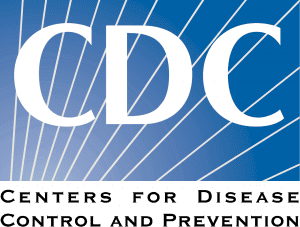- Symptoms Six Weeks After COVID-19 are Reduced Among US Health Care Personnel Receiving Additional Vaccine Doses During the Omicron Period, December 2021–April 2022
The objective of this study was to test the hypothesis that subsequent doses of the coronavirus disease 2019 (COVID-19) vaccine are associated with lower incidence of COVID-19-like symptoms at six weeks after infection. These are the results from a case–control analysis of health care personnel in an ongoing multicenter COVID-19 vaccine effectiveness study. Investigators enrolled participants at the time of COVID-19-like symptoms between December 19, 2021, and April 27, 2022, which corresponded to the early Omicron-predominant period. They are going to report on the prevalence of symptoms six weeks after the onset of symptoms in people that just got the primary series versus people that received a subsequent vaccination. They enrolled 2,478 participants, of whom 1422 (57%) had COVID-19. The prevalence of symptoms at six weeks was 26% (n = 373) in those with COVID-19. Fatigue (11%) and difficulty sleeping (7%) were most strongly associated with COVID-19. Participants with COVID-19 who had received a subsequent vaccination had lower odds of symptoms at six weeks (adjusted odds ratio [aOR], 0.55; 95% CI, 0.43–0.70). The analysis showed that among HCP who had COVID-19, those who received their most recent vaccine dose (whether an additional dose or a primary series) within 16 weeks before their illness had lower odds of reporting respiratory symptoms (aOR, 0.69; 95% CI, 0.46–0.99), psychiatric symptoms (aOR, 0.68; 95% CI, 0.47–0.99), or any symptom (aOR, 0.68; 95% CI, 0.53–0.87) compared with those who received their last dose >16 weeks before illness.
- Microbial Dynamics and Pulmonary Immune Responses in COVID-19 Secondary Bacterial Pneumonia
Secondary bacterial pneumonia (2°BP) is a morbid and often fatal complication of severe respiratory viral infections. Hospital-acquired 2°BP has been especially problematic during the COVID-19 pandemic, leading to longer hospitalizations, increased mortality, and a rise in antimicrobial-resistant (AMR) infections. The co-pathogenesis of respiratory viruses with bacterial pathogens has been recognized for decades, and best studied in the context of influenza virus. In the 1918 influenza pandemic, which led to over 50 million deaths, retrospective autopsy studies revealed evidence of 2°BP in the majority of case. This study found that 2°BP is characterized by changes in the lung microbiome and host transcriptome, as well as dominance of pathogenic bacteria in the lungs that in many cases could be co-detected in the upper airway. They found that 2°BP affected 39.3% of mechanically ventilated patients in this multicenter cohort, and was strongly associated with mortality. These results notably differed from two important prior studies which did not find clear links between secondary bacterial infection and mortality in COVID-19 patients. They also found that patients who developed 2°BP were more likely to have received corticosteroids during their hospitalizations, suggesting that the therapeutic benefit of corticosteroids may come at the expense of increased 2°BP risk. Since early identification and treatment of hospital-onset bacterial pneumonia can prevent adverse consequences including prolonged mechanical ventilation, inappropriate antibiotic exposure, and mortality, it is worth mentioning that they found that 2°BP pathogens could be detected in the lower airway up to a week before clinical recognition of infection. They also reported that in several cases, pathogen-associated AMR genes were detectable before the clinical diagnosis of 2°BP, and were also found in the upper airway. Their genotype to phenotype assessment suggested that metatranscriptomic detection of clinically important AMR genes in NS or TA specimens may have utility for identifying patients with drug-resistant pneumonia.
- Long-Term Risk of Autoimmune and Autoinflammatory Connective Tissue Disorders Following COVID-19
Investigators conducted a retrospective nationwide population-based study where they used the Korea Disease Control and Prevention Agency–COVID-19–National Health Insurance Service (K-COV-N) cohort. Individuals with confirmed COVID-19 from October 8, 2020, to December 31, 2022, and controls identified among individuals who participated in the general health examination in 2018 were included in the analysis. A total of 6,912,427 participants (53.6% male; mean [SD] age, 53.39 [20.13] years) consisting of 3,145,388 with COVID-19 and 3,767,039 controls with an observational period of more than 180 days were included. Alopecia areata (adjusted hazard ratio [AHR], 1.11 [95% CI, 1.07-1.15]), Alopecia totalis (AHR, 1.24 [95% CI, 1.09-1.42]), Vitiligo (AHR, 1.11 [95% CI, 1.04-1.19]), Behçet disease (AHR, 1.45 [95% CI, 1.20-1.74]), Crohn disease (AHR, 1.35 [95% CI, 1.14-1.60]), Ulcerative colitis (AHR, 1.15 [95% CI, 1.04-1.28]), Rheumatoid arthritis (AHR, 1.09 [95% CI, 1.06-1.12]), Systemic lupus erythematosus (AHR, 1.14 [95% CI, 1.01-1.28]), Sjögren syndrome (AHR, 1.13 [95% CI, 1.03-1.25]), Ankylosing spondylitis (AHR, 1.11 [95% CI, 1.02-1.20]), and Bullous pemphigoid (AHR, 1.62 [95% CI, 1.07-2.45]) were associated with higher risk in the COVID-19 group. Subgroup analyses revealed that demographic factors, including male and female sex, age younger than 40 years, and age 40 years and older, exhibited diverse associations with the risk of autoimmune and autoinflammatory outcomes. In addition, severe COVID-19 infection requiring intensive care unit admission, the Delta period, and not being vaccinated were associated with higher risk.
Situation Dashboards

World Health Organization (WHO)
Novel Coronavirus (COVID-19) Situation from World Health Organization (WHO)

Johns Hopkins University (JHU)
Coronavirus COVID-19 Global Cases by the Center for Systems Science and Engineering (CSSE) at JHU

COVID-19 in US and Canada
1Point3Acres Real-Time Coronavirus (COVID-19) Updates in US and Canada with Credible Sources

Genomic Epidemiology COVID-19
Genomic Epidemiology of (COVID-19) Maintained by the Nextstrain team, enabled by data from GISAID.






